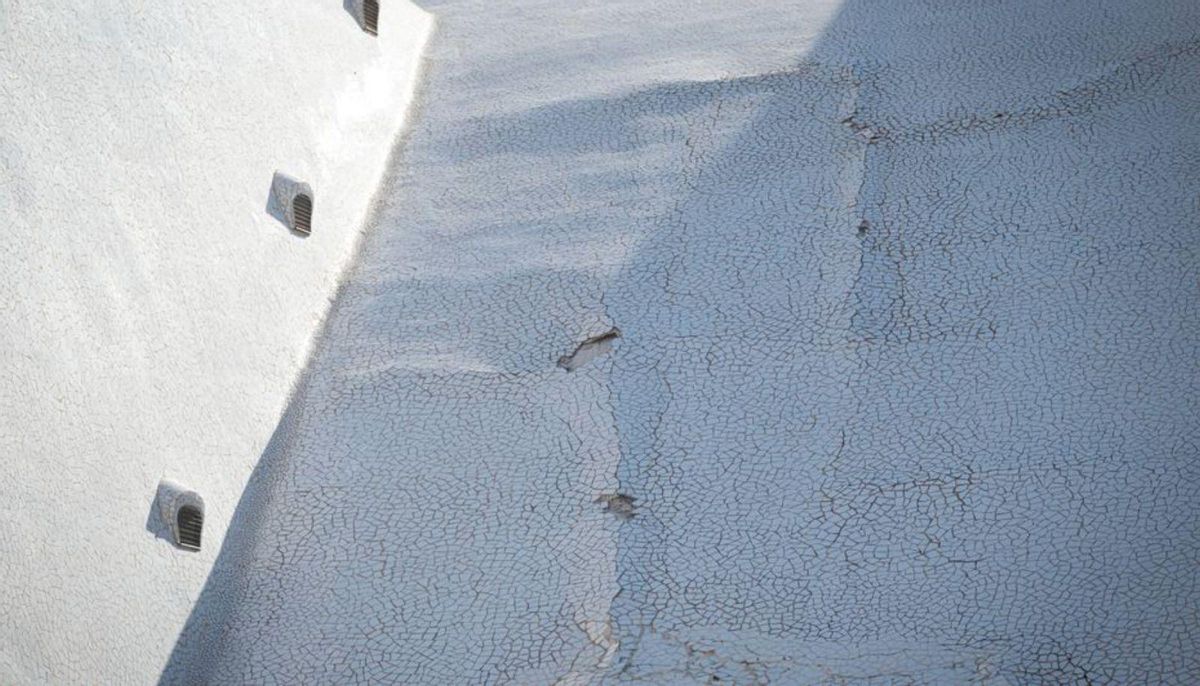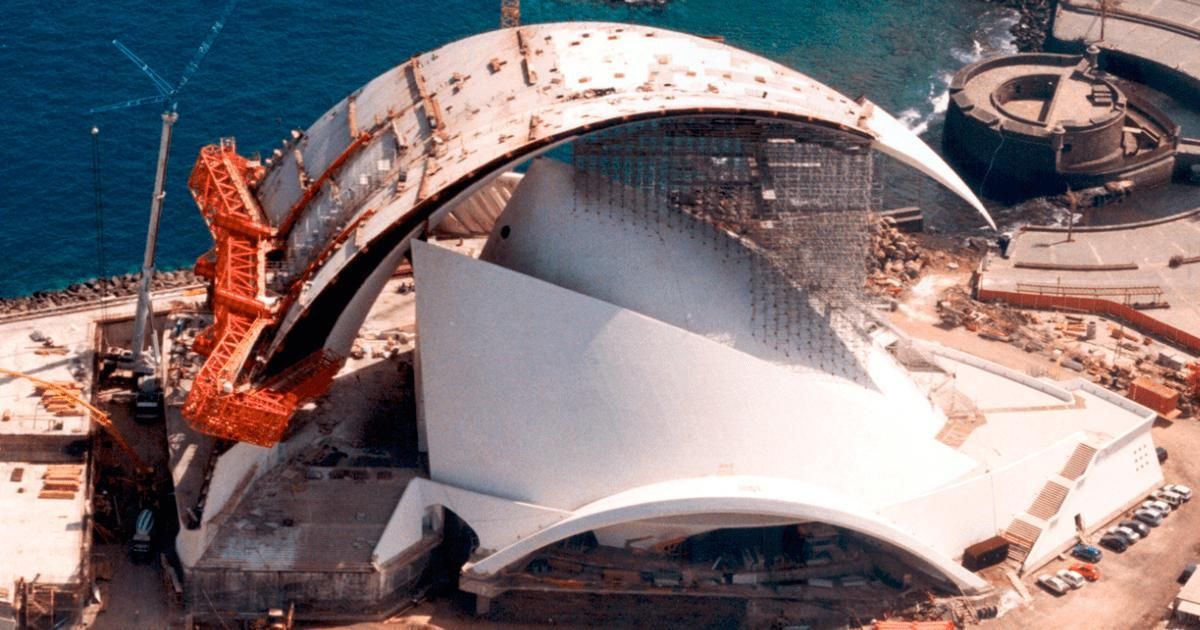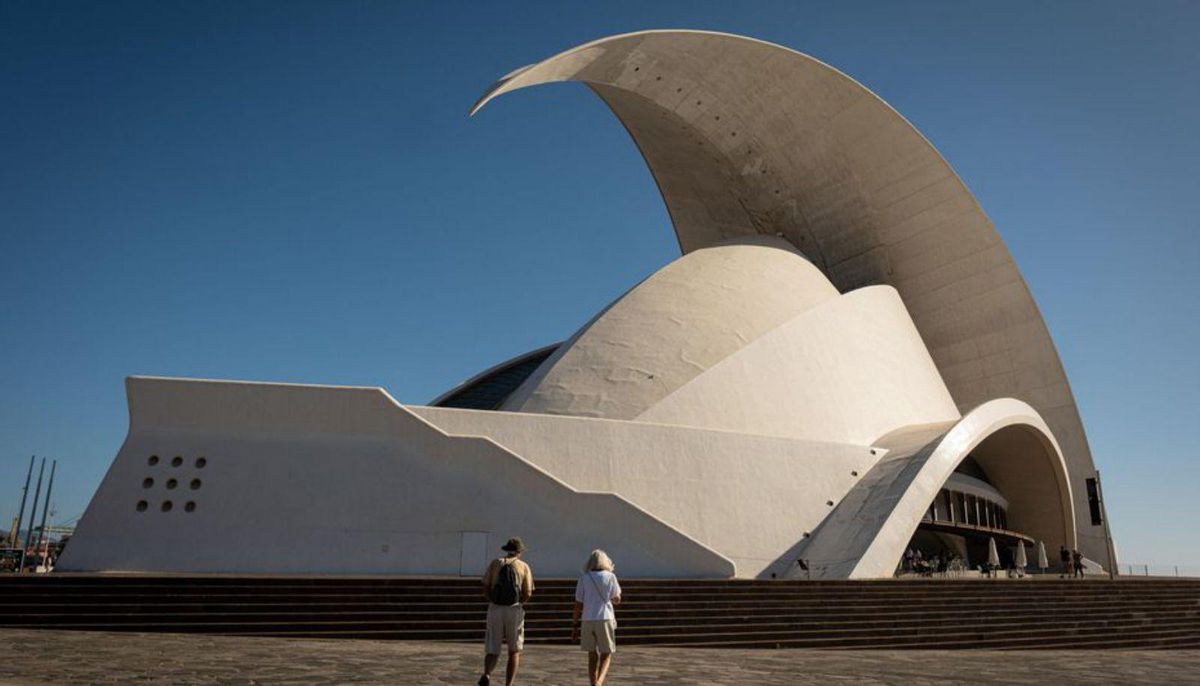Tenerife has made a significant move to Facilitate the renovation of the Adán Martín Auditorium in Santa Cruz de Tenerife. The Cabildo has finally received the design from one of the leading figures in worldwide architecture, the Valencian Santiago Calatrava, who created a structure regarded as the most distinctive in the Canary Islands.
The island’s government, led by Rosa Dávila, is optimistic that this crucial development signifies the beginning of a new phase in the long-needed restoration of the building that defines the skyline of the capital of Tenerife. This announcement follows years of stagnation due to a complicated process that the island Corporation aims to resolve swiftly.
Calatrava’s proposal for the Auditorium’s renovation reached the Council on December 18. The delivery was postponed after the architect sought an extension due to the impact of damage in Valencia, where his team is located.
The insular director of the Treasury, Juan Carlos Pérez Frías, underscores the significance of this “milestone”: “Upon reaching the Cabildo Government, we initiated negotiations to avoid further delays in the restoration of this iconic structure.
After four years of inaction, we succeeded in having Calatrava commit to drafting the restoration project, with a deadline set for November of this year. According to Pérez Frías, with this delivery, “the first phase of a long-awaited process is accomplished.”

Significant step towards repairing the Auditorium: Calatrava finally submits the project | A.J.
This situation has a lengthy history. A few years subsequent to the Auditorium’s inauguration, which was 22 years ago (September 26, 2003), issues were already identified in the Auditorium’s covering, particularly in the so-called trencadís, the decorative surface resembling a mosaic made of fragments of ceramics, which are emblematic of Santiago Calatrava. In 2016, the Cabildo, then under Carlos Alonso, commissioned a study to assess its condition. It revealed that there were inadequacies in the execution of this work. The primary reason is inadequate adhesion on the surface materials.
The 2018 Procedure
The administrative procedure initiated by the insular Corporation to ascertain responsibilities concluded in 2018. It confirmed the presence of latent defects in the construction and ordered the rectification of the damages. Responsibility was attributed collectively to all parties involved in the construction process: Calatrava – in his role as project director –, the surveyors, as well as the companies (Acciona, Dragados, and Punta Larga) responsible for the work. With the passing years, the defects have become increasingly severe and visible. Today, they are conspicuous: cracks and bulges across the outer surface.
Still awaiting a resolution with the architect and the builders regarding the expenses, the Cabildo at least has the document it requested from Calatrava detailing how to tackle some very intricate tasks. The striking design of the Auditorium has resulted in considerable complications during its construction, meaning that any new intervention necessitates very particular techniques and materials. Once the technical project has been submitted, the Cabildo has commenced its oversight to ensure compliance with legal and technical standards. This task has been entrusted to Bureau Veritas Solutions Iberia.

The Auditorium of Tenerife during its construction in 2000. / ED
This review process includes the vvalidation of coherence and formal content of the technical document, the appropriate clarity of the proposed construction solutions and the planned processes for their execution, as well as the adequacy and completeness of the content. Additionally, Bureau Veritas will assess the functional organisation of the project to ensure that the cultural activities of the Auditorium can be maintained throughout the restoration. The deadline for this report is two months, concluding by the end of March.
Simultaneously, the Tenerife Cabildo is focusing on appointing the project management for the works, considering that Santiago Calatrava has declined this responsibility. In light of this inarguable refusal, the insular Corporation, to avoid further delaying the process and to restore the Auditorium as promptly as possible, has opted to proceed with the subsidiary execution of this stage, inviting tenders for the recruitment of a specialised company. The cost of construction management will be borne by the Valencian architect, contingent upon what is determined in the associated judicial process.
The absence of agreement among the Cabildo and the designated parties deemed responsible for the deficiencies – architect, surveyors, and construction firms – led to this judicial action. On July 16, 2019, a meeting of the representatives of the involved parties was convened before the judge. In the minutes of this meeting, the magistrate urged the parties to seek an agreement to suspend the proceedings. He conveyed this in the following manner: “There is no obstacle preventing the parties from attempting to find an extrajudicial resolution, as occurred in the case of the Valencia Auditorium, a structure akin to that of Santa Cruz. As revealed in this hearing, Valencia reached a satisfactory extrajudicial resolution, which serves as a useful and pertinent precedent for the parties.
All parties consented to commence negotiations and requested the court to suspend the proceeding, which the judge sanctioned. However, as of now, a definitive agreement remains to be reached to conclude it.

Significant step towards repairing the Auditorium: Calatrava finally submits the project | A.J. / Arturo Jiménez
A Highly Intricate Operation
Juan Carlos Pérez elucidates, “while the judicial process is underway, and without prejudice to coming to an agreement on who will ultimately bear the costs of the repair, the implementation of the Cabildo agreement to repair the damages to the Auditorium is ongoing.
The insular director further highlights the “complexity” of the procedure and the “importance of adhering to legal protocols.” Thus, he clarified that “this is a multifaceted case and we are exercising a high level of diligence regarding the procedures.” Their aim, he added, is to “restore the Auditorium as swiftly as possible, meeting legal and quality standards.” Pérez noted that having the project initiated “for the first time” represents “a major breakthrough,” but cautioned that “it’s not merely about speed, but about being thorough.”
The estimated cost for the repairs stood at 18 million in 2018, with an additional provision of 5 million in case cultural activities had to be suspended during the renovations. However, the budget remains to be defined with the project recently submitted by Calatrava, with the current island Government hoping that this additional provision will not be required.
Subscribe to continue reading
















